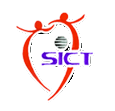Saturday, November 20, 2010
Friday, October 1, 2010
Fw: Invatec received clearance from...
http://www.sict.co.in
http://www.sictindia.blogspot.com
Sent from BlackBerry® on Airtel
Thursday, September 30, 2010
Tuesday, September 28, 2010
Medtronic's Resolute Drug-Eluting Stent Shows Strong Performance in Second 'All Comers' Study
The findings include one-year results for RESOLUTE International, two subsets from RESOLUTE All Comers, and four-year results for the RESOLUTE feasibility study, which supported the CE (Conformite Europeenne) mark of the Resolute DES.
Promising New Therapy for Drug-Resistant Hypertension
The slender Micro-Infusion Catheter is introduced into an artery through a small needle in the upper leg, and is guided into the main kidney artery (the renal artery). Once positioned, a balloon at the tip of the catheter is inflated inside the artery, sliding a 130 micron (two hair widths thick) microneedle through the artery wall into the tissue known as the adventitia, which envelops the hyperactive nerves leading to the kidney. As the drug is infused through the microneedle, it surrounds the artery to create an effective cylindrical treatment zone and reduces the nerve signals which cause high blood pressure.
http://www.MercatorMed.com
Monday, September 27, 2010
Neovasc Reducer(TM) for Refractory Angina Featured in Live Case Sessi on at TCT 2010 Conference
The Neovasc Reducer is a novel device designed to treat patients who
suffer from refractory angina, a painful and debilitating condition that
occurs when the coronary arteries deliver an inadequate supply of blood
to the heart muscle. Refractory angina currently affects over two
million patients worldwide, who typically lead severely restricted
lives.
Link:
www.neovasc.com
Results from Three Peripheral Clinical Studies at TCT on September 22
Link:
http://www.csi360.com/diamondback360.html
St Jude's New C7-XR OCT Intravascular Imaging System
St. Jude Medical to Showcase New Lesion Assessment Technology at TCT 2010
St. Jude Medical, a global medical device company, will highlight recently launched technology, including its new Optical Coherence Tomography (OCT) product platform, at the 22nd annual Transcatheter Cardiovascular Therapeutics (TCT) meeting in Washington, D.C. The new C7-XR(TM) OCT Intravascular Imaging System complements the company's PressureWire(TM) Fractional Flow Reserve (FFR) measurement technology platform, offering physicians a new diagnostic standard for comprehensive intravascular lesion assessment.
The C7-XR OCT Intravascular Imaging System is a leading imaging technology platform that aids physicians in the diagnosis and treatment of cardiovascular disease. The C7-XR System uses near-infrared light to create high-resolution images that allow physicians to visualize and measure important vessel characteristics otherwise invisible or difficult to assess with older imaging technology. The St. Jude Medical OCT product platform expands the company's lesion assessment portfolio, which includes the recently launched PressureWire(TM) Aeris FFR Measurement System, and adds anatomical knowledge to the physiological information provided by FFR measurements. While FFR accurately identifies which lesions to stent, OCT-guided treatment can be especially important for the assessment of stent placement because it shows precisely how the stent is positioned against the artery wall.
St. Jude Medical is the first to offer both OCT and FFR technologies .
In addition to guiding stent selection, the C7-XR System provides physicians with post-stenting information by evaluating the position and deployment of the stent. At follow-up, the OCT technology provides detailed information regarding the inner lining of the vessel and whether there is a reoccurrence of the blood vessel narrowing.


